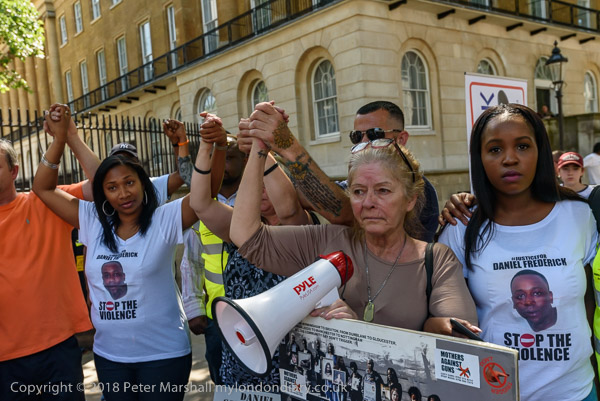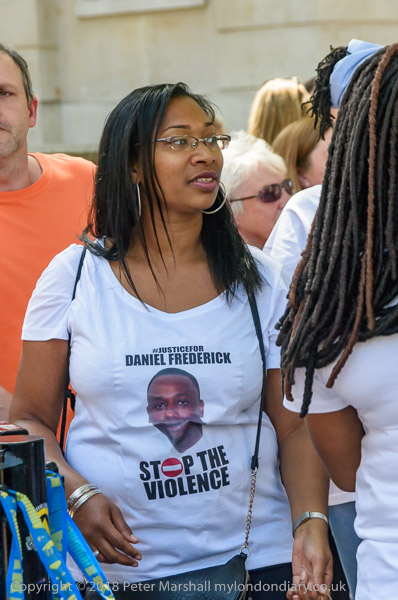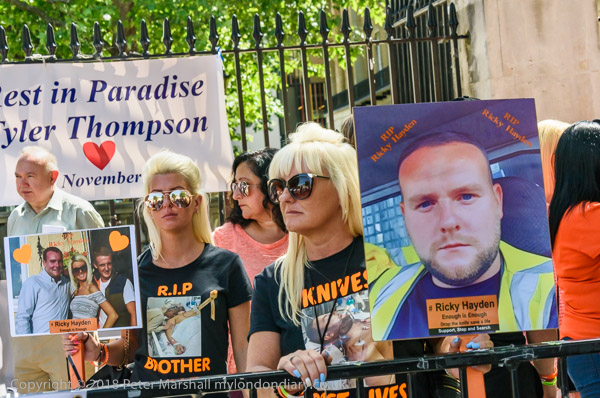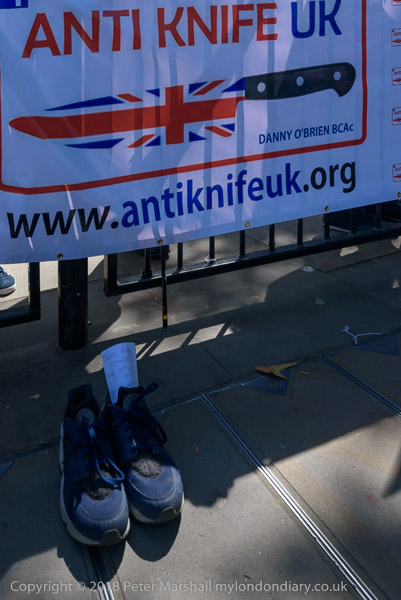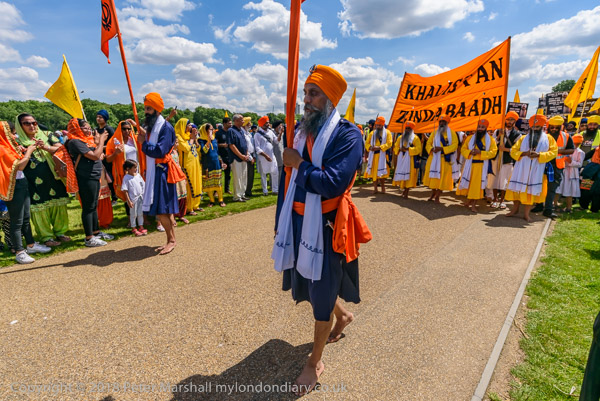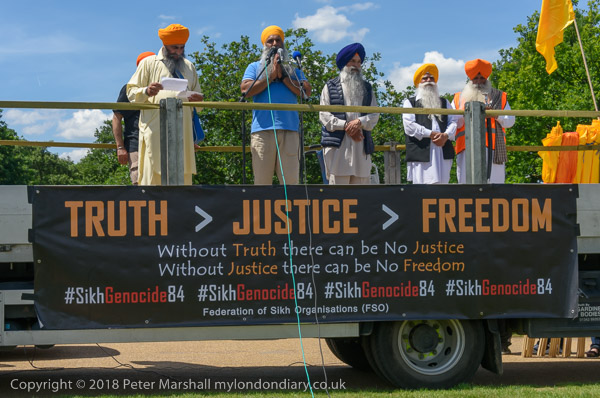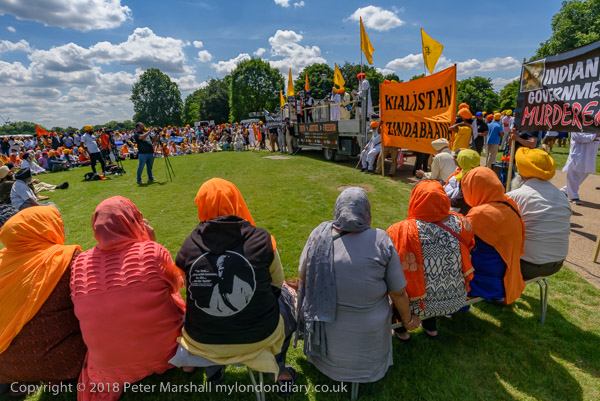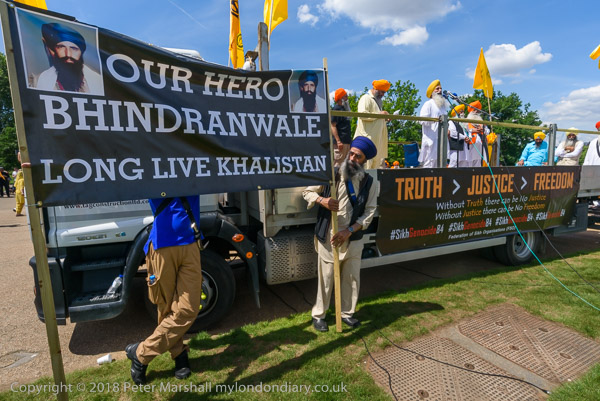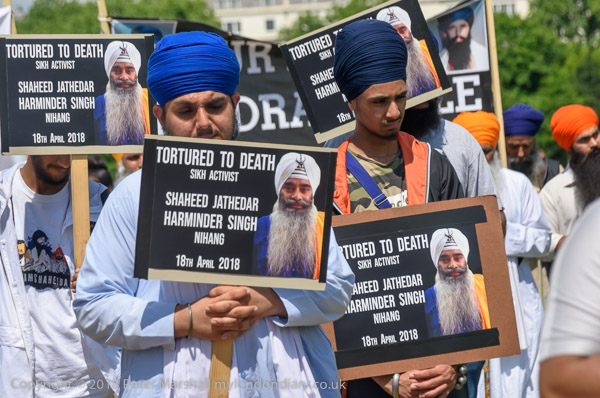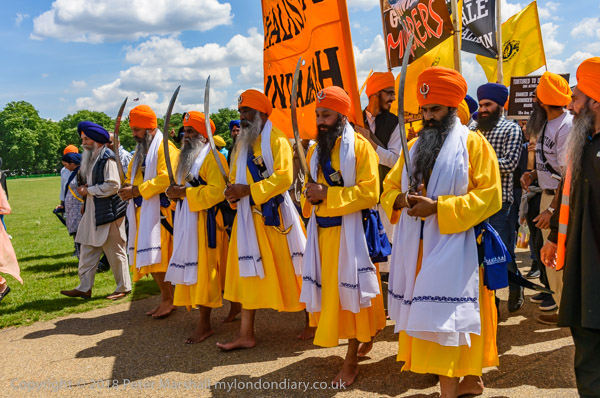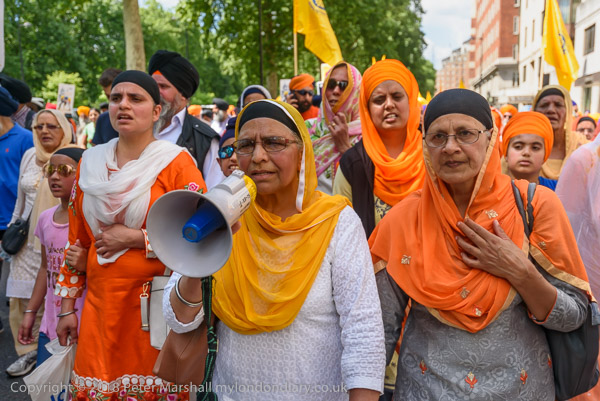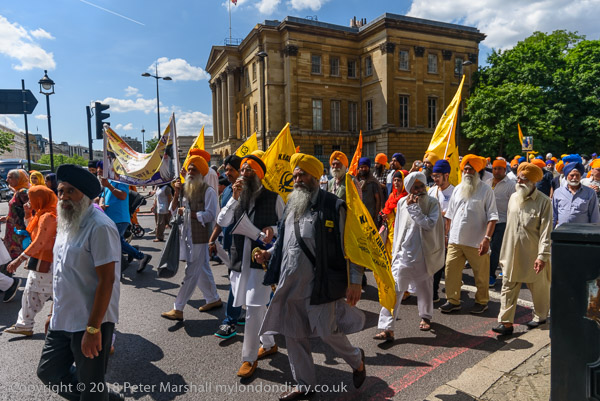Vaisakhi in Gravesend – Saturday14 April 2012: Gravesend is in Kent around 20 miles east of London on the River Thames and home to around 15,000 Sikhs in a population of just over 100,000. The first Gurdwara opened here in 1956 but in November 2010 a splendid new Gurdwara was opened, the Guru Nanak Darbar Gurdwara. This is said to be the largest Gurdwara in Europe and one of the largest outside India and cost £12 million, financed by donations.
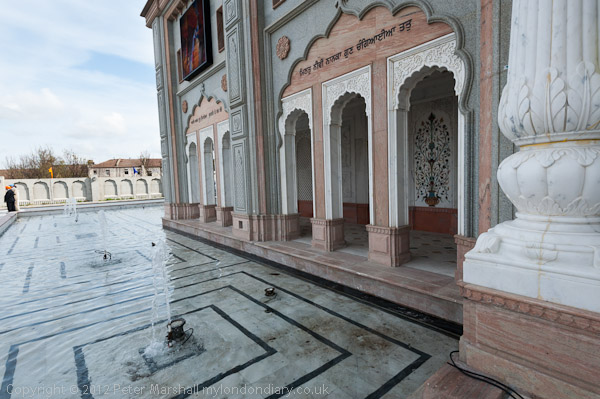
The temple is on a large site around half a mile east of the railway station and I arrived too late to make a tour of the place as the Nagar Kirtan procession was getting ready to start.
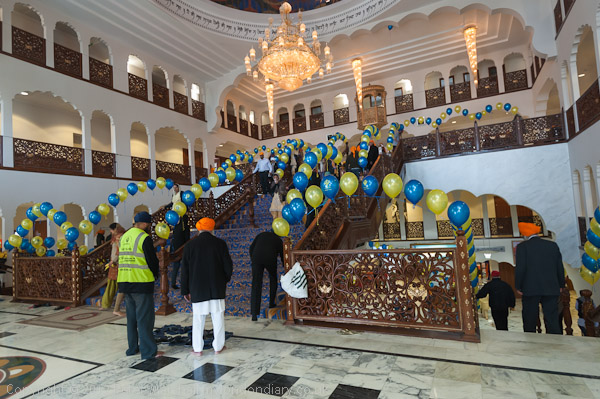
I took a short look inside then went back outside to photograph the Guru Granth Sahib (Sikh Scriptures) being carried out ceremonially to be put inside a model of the Golden Temple of Amritsar on one of the floats at the head of the procession.
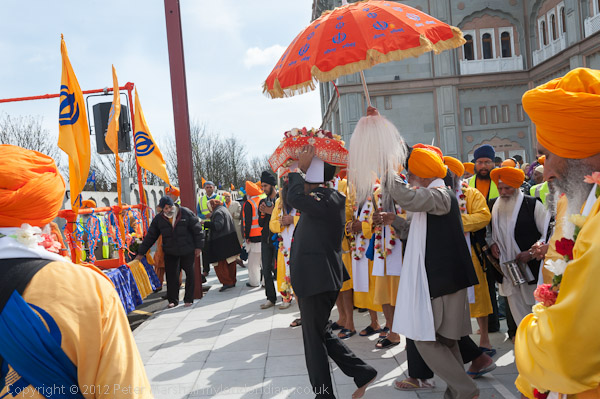
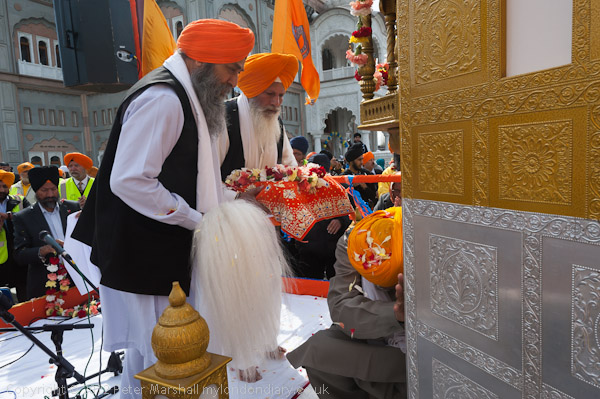
There were lengthy prayers outside the Gurdwara before five Khalsa, baptised Sikh men in saffron robes carrying Sikh standards and five more with raised swords representing the Panj Pyare baptised at Ananpundur in 1699 by the last living human Guru, Guru Gobind Singh Sahib, the founding of the ‘Khalsa’ took their place in the procession behind an open lorry carrying a large Nagara drum and its beaters.
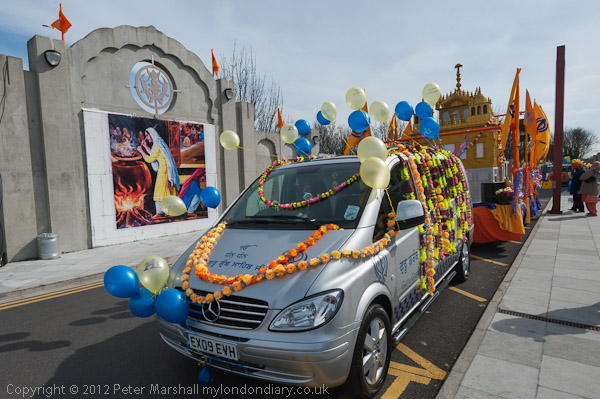
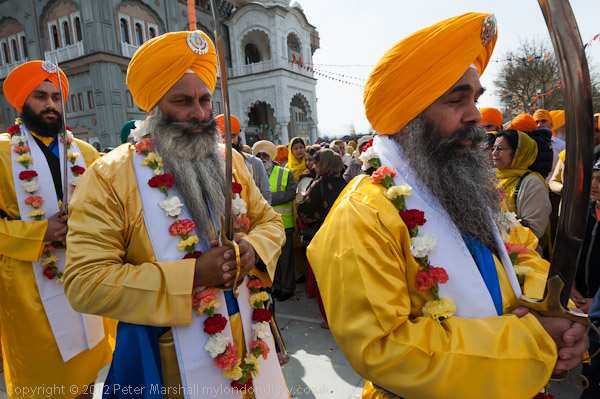
Behind them was the Guru Granth Sahib and then the walking congregation (Sangat) led by Punjabi School children, then the women and after them men, along with several vehicles carrying the elderly.
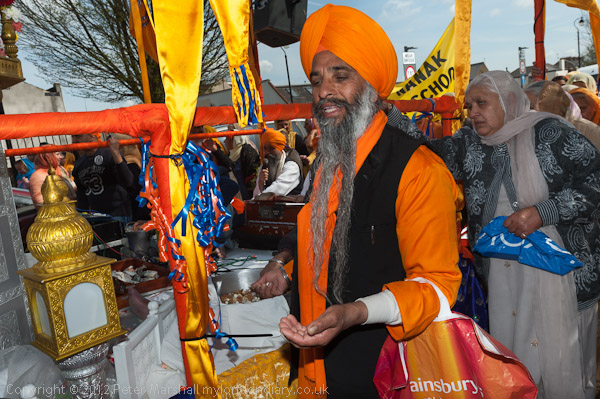
The Gurdwara also has various cultural, social and sports groups, including Bhangra music and dance groups, the Guru Nanak Football Club and children from local primary schools and lorries carrying some of these made up the end of the procession.
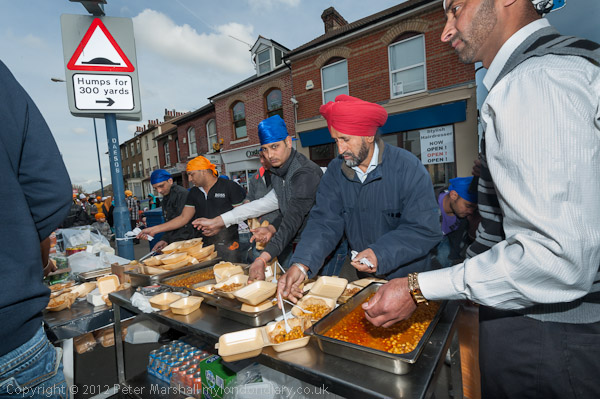
I hadn’t arrived early enough to visit the Langer, but as the procession made its way around the centre of Gravesend there were a number of stalls handing out free vegetarian food and drink. I enjoyed some delicious vegetable curry with a strong mint flavour as well as some very sweet chai and a couple of vegetable samosas, but there were also plenty of treats for the children, lollipops, soft drinks and sweets.
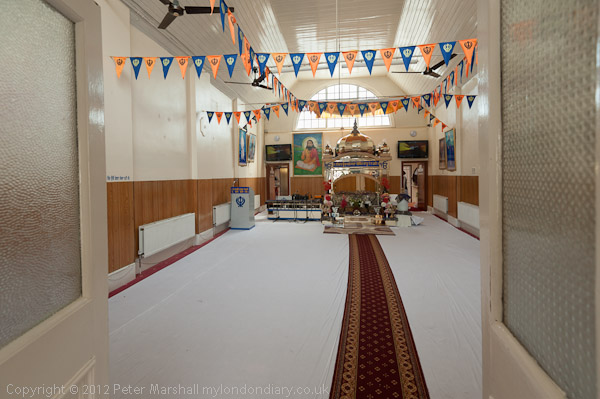
Close to the very much smaller Shri Guru Ravidass Gurdwara in Brandon Street there was a large crowd waiting to see the procession and more people handing out free food. I paid a very brief visit to see the interior of this temple.
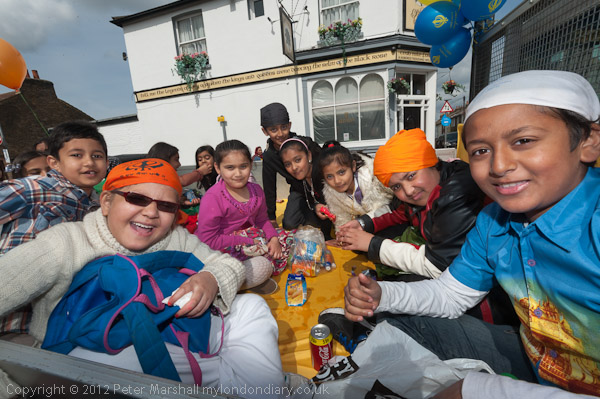
The procession was going back towards the Gurdwara when I waited to see the end of it go past before going to catch a train. The celebrations were to continue the following day with a religious service in the Gurdwara.
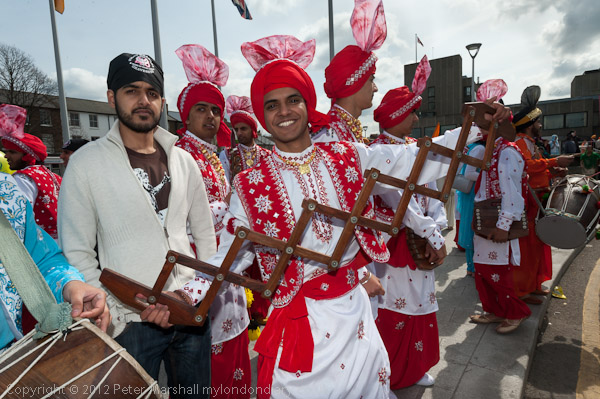
Many more pictures at Gravesend Vaisakhi.
Flickr – Facebook – My London Diary – Hull Photos – Lea Valley – Paris
London’s Industrial Heritage – London Photos
All photographs on this page are copyright © Peter Marshall.
Contact me to buy prints or licence to reproduce.
